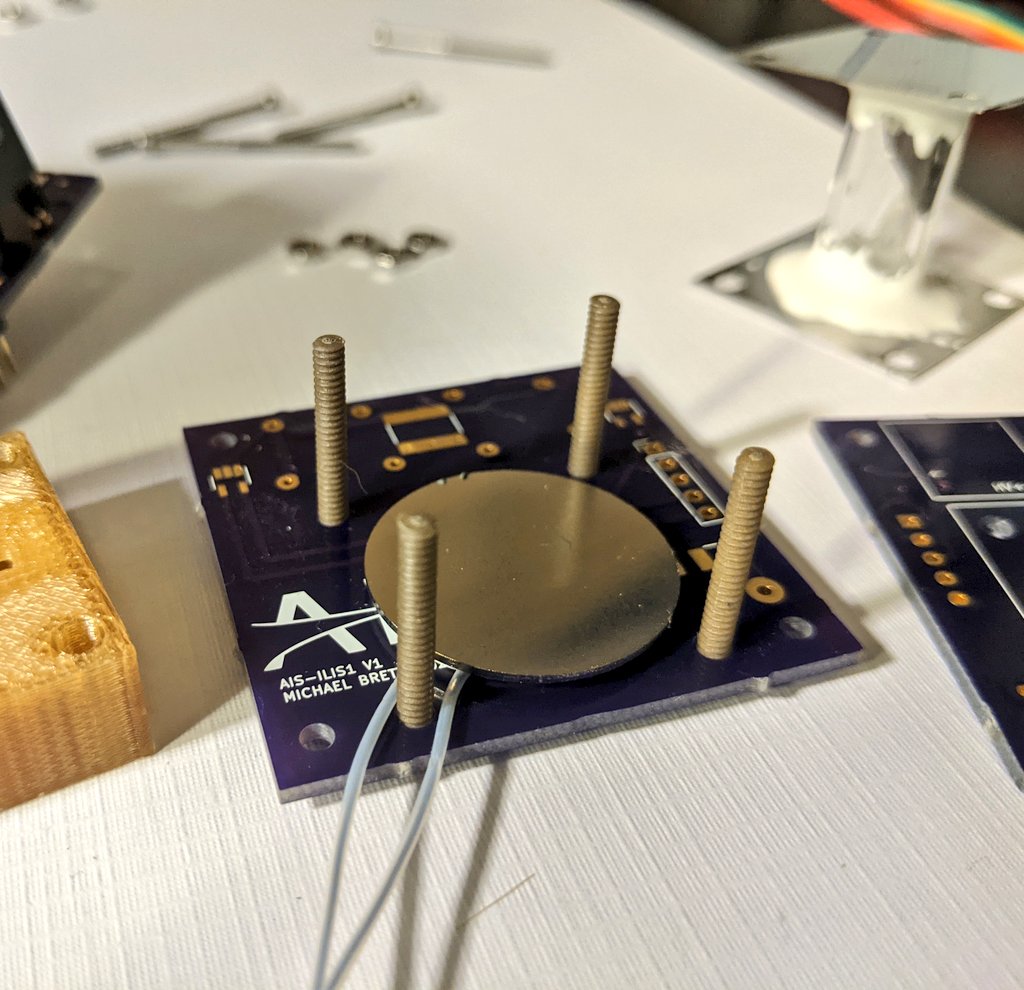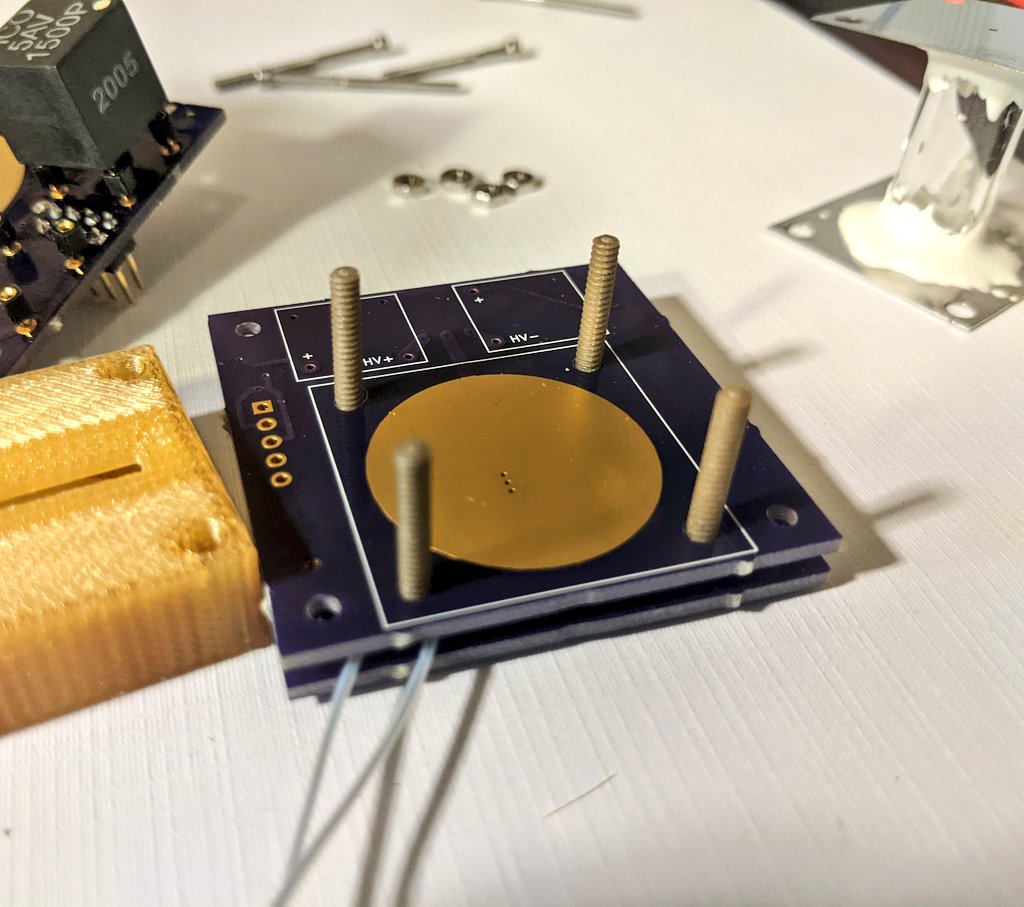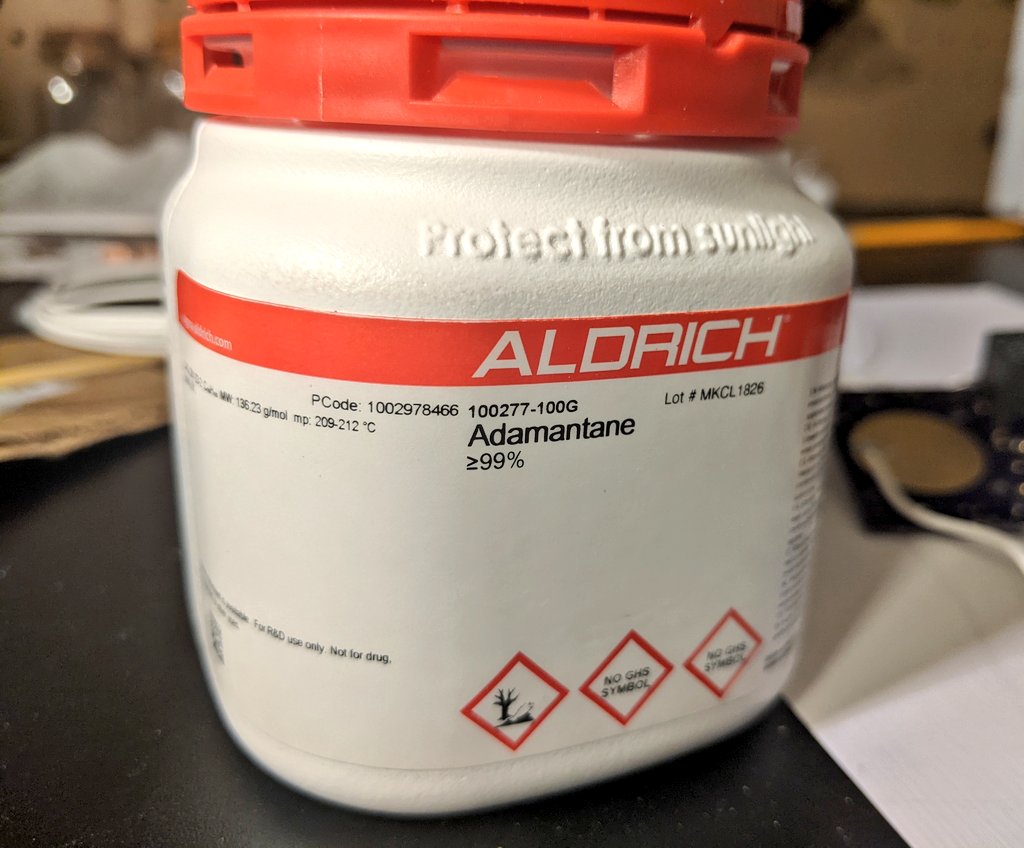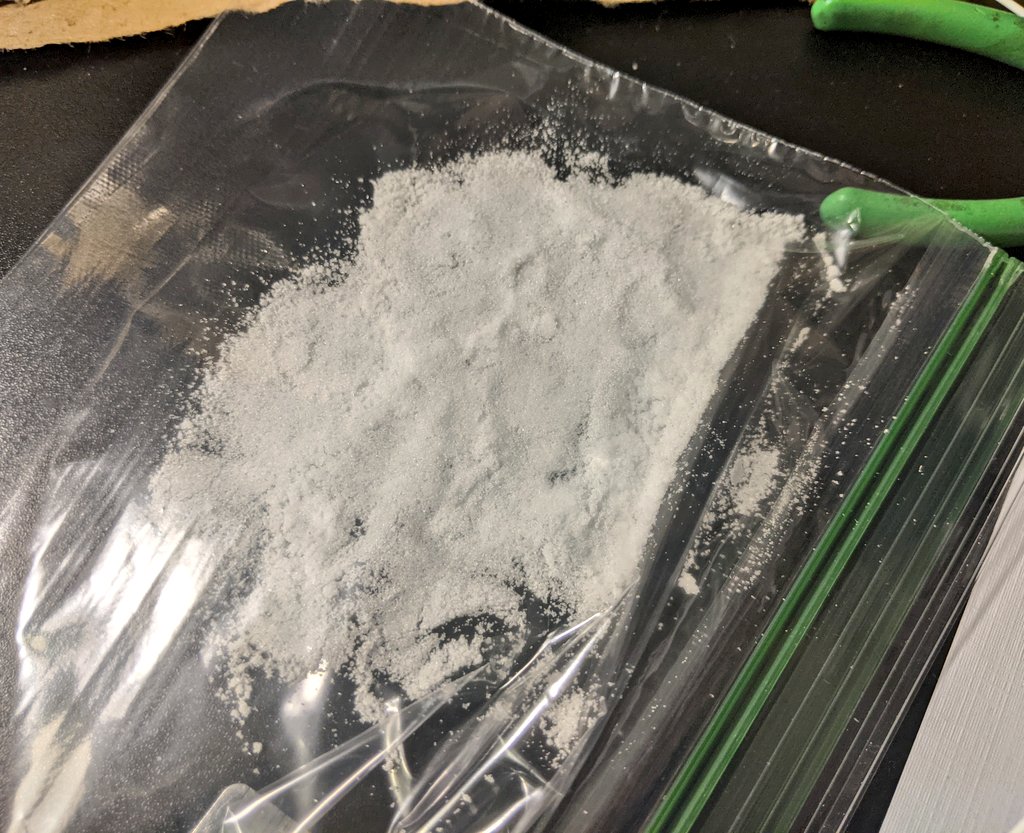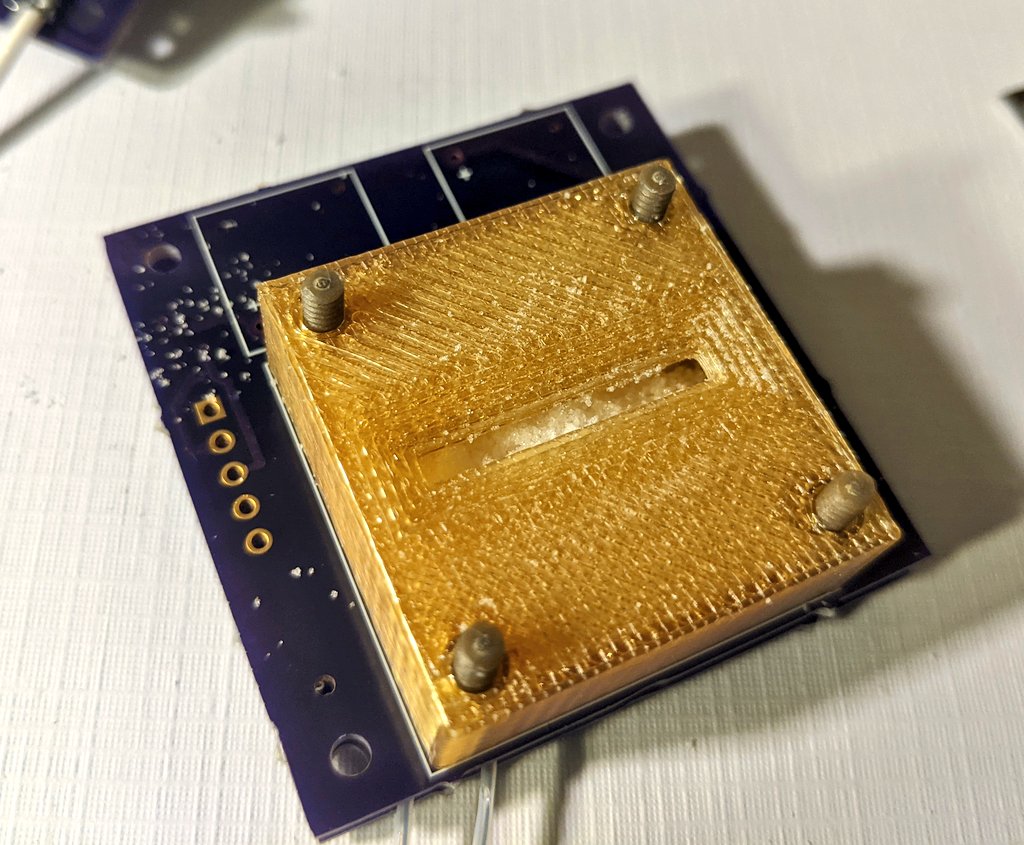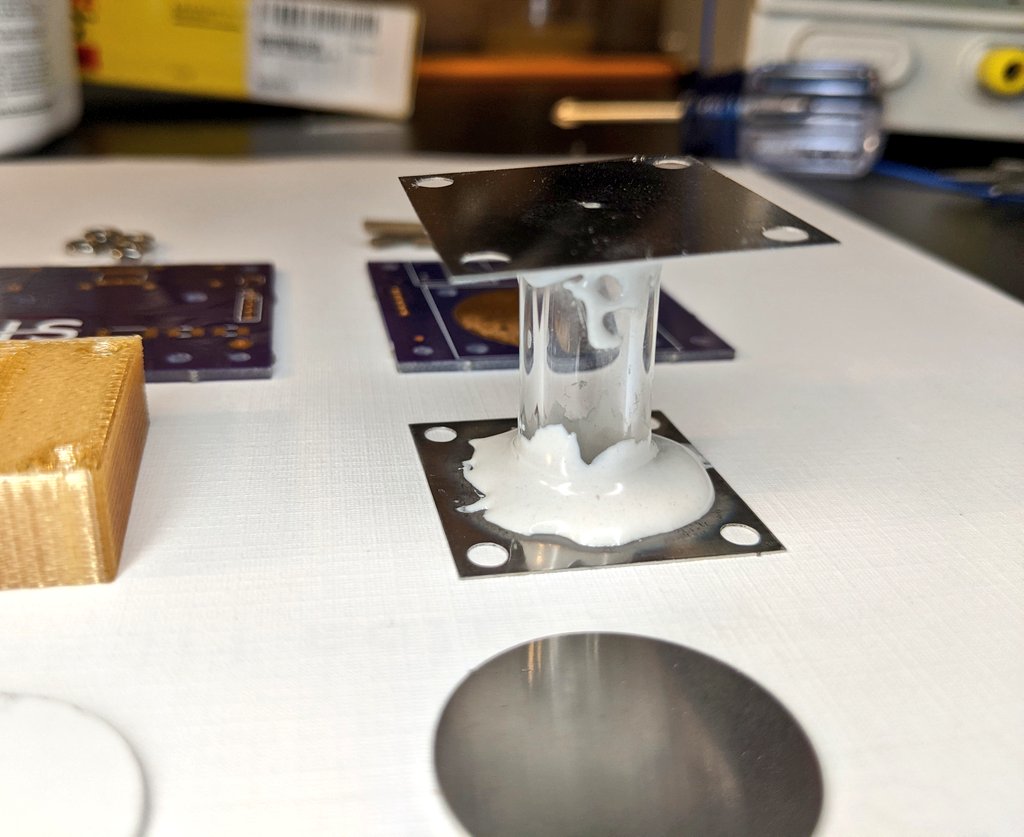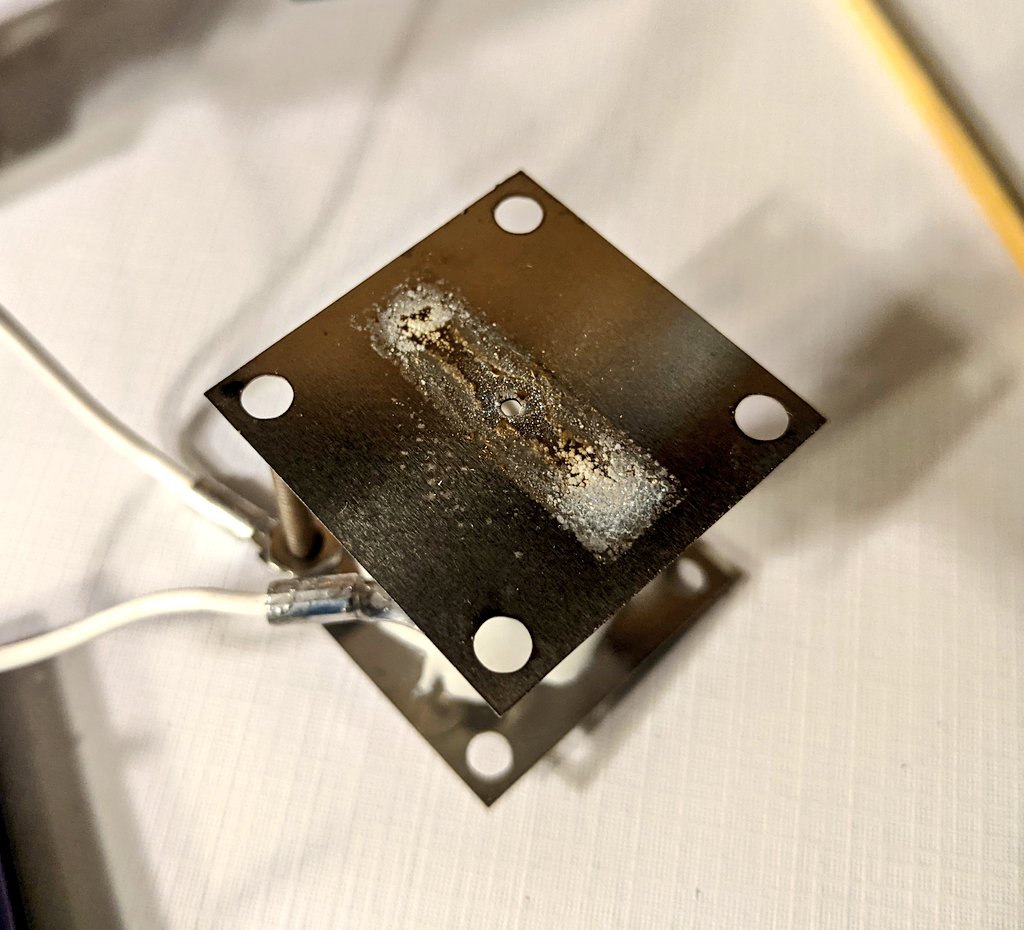Last night I ran the first ever sublimation and glow discharge ionization test of Adamantane in vacuum. This test not only provided crucial preliminary information for the ADAMANT Series development, but proved to be a major breakthrough in the effort as well.
In order to test both sublimation and ionization of the Adamantane, I had to construct a very simple test system that would allow me to accomplish both goals at the same time. First was the sublimation part of the test system. To accomplish this, I repurposed several old thruster parts from the ILIS1 development to create a sublimator. The ceramic heater was sandwiched between two ILIS1 boards, with a thin nickel contact plate to transfer heat to the upper board. The large HV pad on the top of the ILIS1 board served as the heater surface for the test sublimator.
Adamantane is a a coarse granular material, looking like either white sand or table salt. I took a chunk of Adamantane and broke it up in a plastic ziplock bag with a hammer. A spare ILIS1 3D printed Ultem housing was used to hold the Adamantane in place on the heater board. The granular Adamantane was then poured in through the top slit. Heat could now be applied to the test cell, sublimating the Adamantane through the slit into the discharge cell.
To create the discharge cell, I took a 3cm length of 0.375″ diameter borosilicate glass tubing and epoxied it to a couple of spare ILIS1 extractor plates using vacuum compatible Hysol-1C epoxy. The bottom plate has a 1.4mm diameter hole, while the top plate has a 1mm diameter hole. The test cell was then bolted in place over the makeshift fuel chamber.
The test cell was then wired up to a small 1.5kV Pico supply, with the bottom plate at ground and the top plate at HV. The system was loaded up into the vacuum chamber and pumped down. Pumpdown was unusually difficult, reaching a level of only around 5.8×10^-4 Torr, signficantly worse than the 10^-6 and lower I get with other testing. This was most likely due to the passive sublimation of the fuel into the chamber during pumpdown. However, the chamber temperature was only 12.5C, indicating that the gas load from the sublimation of Adamantane in vacuum is significant, even at very low ambient temperatures.
High voltage was first applied to the test cell, with no discharge observed. Heater power was brought up to 3.5W, where immediate loading on the chamber was evident, and a clear discharge was observed in the test cell. Heater power was turned off, in which the glow discharge eventually faded. Success!
Below is a video captured during the test, showing a stable Adamantane discharge in the test cell with 3.5W heater power and 1kV discharge voltage for the 3cm long glass cell.
Here is a captured shot of the discharge. Note the unusual pale-green color of the plasma, as well as the tiny plasma plume emanating from the top of the discharge cell through the upper plate aperture.

After the test, the test cell was removed from the vacuum chamber for inspection. A very clear ring of erosion could be seen on the top of the upper discharge plate around the exit hole due to the plasma. It was also clear that all of the Adamantane was successfully sublimated during the test. In addition, there appeared to be some buildup and slight charring of fuel on the bottom plate, most likely to both condensing fuel as well as plasma leakage into the fuel holding area. It was also discovered that the Pico supply was failing, which could be replaced for future tests.
This test was the very first steps at AIS exploring the use of highly experimental and unconventional Adamantane fuel for electric propulsion. These results are honestly quite extraordinary because I am going into this development near blind. There is almost no data in the EP field on this fuel, and even in the chemistry field in general there is very little on the ionization properties of Adamantane. Not only is Adamantane incredibly easy to sublimate at low temperatures, but it can be ionized very readily at extremely low power levels at a couple of watts and less. Now that I demonstrated sublimation and ionization of the fuel, I have enough confidence to move forward on the new micro end-hall thruster build. For the first test of 2021 and my very first experience with this highly unconventional ion thruster fuel, this is a major step forward into uncharted, new territory in EP!


